There was a time in my life when I had decided never again to camp. It came after a particularly bad camp-out in which every single soul in my group of 6 got the stomach flu, or food poisoning. This resulted in the worst night ever and was followed by the worst 3 hour drive home ever. As I was the unlucky soul well enough –or practiced enough at driving while puking on winding roads, it was with satisfaction and glee that I helped set the tent on fire when we all got better.
It took 8 years for us to overcome our camping PTSD but in the end none of us could resist the siren call of tents, fires and smores.
Even still camping is not my first choice of ways to travel. When some family members returned from an Audubon camp in the Sierra Nevadas with pictures my first thought went to all the rustic cabins that were in the backgrounds of the pictures. Roughing it with a bed sounded good to me so I called around to see what kind of price I could get for cabin camping.
I was excited and my mouth began to water when I heard the nightly menu of food offered at the lodges of some of these places. Pine nut encrusted Lamb chops. Lake trout almandine and ratatouille cous cous for the vegetarians amongst us. Followed by ginger cake and mountain berry clafoute. I was sold on the menu.
Then came the price tag: $1276.00 for a three night stay. After I caught my breath again I hung up the phone cursing the cabin people for leading with majestic food choices designed to make my mouth water and following up with such ridiculous prices. The fact of the matter is with very little planning I could make all that stuff myself over an open fire and the top cost depending on cuts of meat would be about $300 for 3 nights, that’s including campsites, groceries, bug spray and gas. It was a no-brainer, we were tenting it.
The area we were headed to was one that I had never been to before although I am a Californian born and raised. Nestled in between the mountains and valleys of the Sierra Nevadas between state Hwy 49 and state Hwy 70 is a region dotted with crystalline lakes and streams and rivers. It is full of granite rocks arranged as if giant children had a rock flinging contest one afternoon and never cleaned up and Pine trees are mixed in with surprisingly enough, Aspen and unsurprisingly, Manzanita of all kinds.
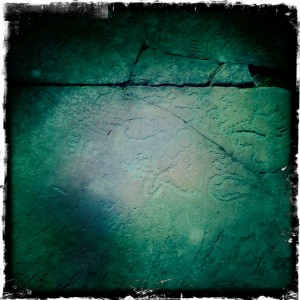
The First People who lived here were lost and have an unrecorded history. The Maidu who followed them spoke of them and drew pictures of them but again the Maidu’s language was mostly lost due to head prices put on the Maidu during the gold rush era. Maidu means ‘Man’ so like many of the first people their name as given to the white settlers was simply “People”. It is a little misleading to say the area was settled by the Maidu as the Maidu were a huge clan consisting of many breakaway clans. California is unique in that there was a lot of mountains and valleys to separate people. So very often you will find that many clans like the Paiute, the Miwok and the Yahi were all technically the same tribe but had forgotten, separated or left due to the vast land and availability of sustenance. The Maidu in this area were mostly driven away and exterminated due to gold mining operations so it is unclear exactly which tribes inhabited the area and when. Through epidemics brought to them by the colonizers, and by bounties placed on their lives by the government, the Maidu population dropped from 10,000 to 330 individuals in a matter of three decades. There are petro glyphs left by the Maidu, Much of the petro glyphs look like maps or lists, things to tell people where they had been and what they had found.
This is gold rush country. The nearest “town” which is actually a small Ghost Town catering to tourists is Downiville. Downiville, the first state Capitol of California, was first settled 1849 headed by a William Downey, a Scotsman who came out with other 49ers but like most of those who truly made money off the rush he provided services to gold miners and set up a town. By 1851, the camp had a population of 5,000. Several large nuggets were discovered over a period of time, the largest weighing 427 pounds, including its quartz matrix, and was sold for $90,000. Like so many other mining towns of that era, Downieville began to decline and by 1865, it was clear the end as a mining town was near. The Town has the dubious distinction of being amongst the first in California (after it was made a state) to hang a woman. The legend attached to a building adjacent to the bridge where she was hung tells of a drunken man who tried to take advantage of a lovely young Mexican woman, ‘Juanita’. When he sobered up the next day and supposedly came to apologize she killed him. She was found guilty on the spot and drug out and hung from the bridge crossing the river. Like most struggling ghost stories the town likes to play up the ghostly legend but most people readily admit Juanita doesn’t haunt the spot. Mark Twain lived in and around the area while he was trying his hand at gold mining (at which he failed dismally) and during the time he was conceiving ‘Roughing It’ and ‘American West’
It was during this time period, that the area became a vacation destination Hot Spot with spas and resorts popping up along almost every creek and river. With several hot springs nearby, entrepreneurs made use of the bathing craze and opened up spring baths. One of the best still survives, at Sierra Hot Springs, which also boasts a lithium pool, good for whatever ails you!
It was a perfect area for turn of the century get-a ways. It is about 2 hours away from everything north of San Francisco making it a good place to travel up and away from the heat in a time when there were no air conditioners and no cars. Much of the roads still reflect these horse and wagon roots with their narrowness and horse path –path of least resistance- meandering.
The names of the towns and way stations are sounds that you would expect from the turn of the century; reflecting either what happened here like Bullet’s Bar or what you could expect, like Grassy Lake-which is exactly as it sounds.
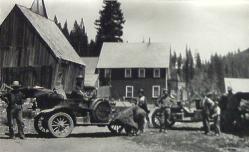
One of these places that have been in business since 1871 is Basset Station. Jacob and Mary Bassett purchased the Howard Ranch from Chis Tegerman. In 1871, they opened The Bassett’s House Resort high in the Sierras (elevation 5400 ft) where Howard Creek joins the Yuba River. Since then, Bassett’s has been a stage stop, hotel, telegraph station, logging camp; saw mill, and gas station. It has been a haven for sheep herders, cattleman, loggers, miners and others working in the
mountains. Today’s Basset Station is the centrally located gas and convenience store which reflects its mountain roots. There’s a wooden bar out front for eating and drinking and a gas pump on the top of a hill. Ice cream and beer are served here side by side and you can get free water from the hose, but have to hike down to the bottom of the drive to use the facilities.
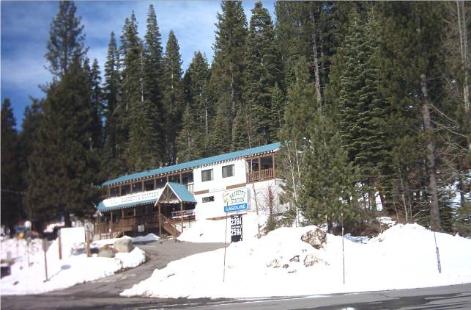
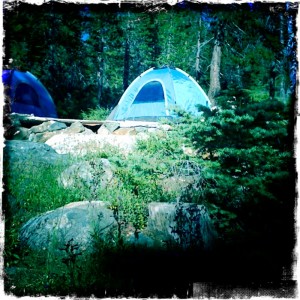 The place we chose to camp was almost at the top of the pass, a privately owned campground called Lakes Basin. This at one time was an upscale resort, with a lodge, a kitchen, bathhouse, and tent-cabins as well as regular cabins. What remains now looks a little like ancient ruins –if you ignore the drain pipes in the middle. Almost all of the camp areas had their own little ruin and we ended up pitching our tents on the foundations of a high-up round tent-cabin which probably in its first incarnation looked a little like a yurt. Nearby there was archeological gold galore in the form of broken bottles, burn-out kitchen implements and rusted cans, rusted things of all sorts that we could make up stories about.
The place we chose to camp was almost at the top of the pass, a privately owned campground called Lakes Basin. This at one time was an upscale resort, with a lodge, a kitchen, bathhouse, and tent-cabins as well as regular cabins. What remains now looks a little like ancient ruins –if you ignore the drain pipes in the middle. Almost all of the camp areas had their own little ruin and we ended up pitching our tents on the foundations of a high-up round tent-cabin which probably in its first incarnation looked a little like a yurt. Nearby there was archeological gold galore in the form of broken bottles, burn-out kitchen implements and rusted cans, rusted things of all sorts that we could make up stories about.
The real prize of this campground was the abandoned pool. A waterhole that had been built up with granite steps had been left to decline for all of these years. However there was something magic about stepping into this lost swimming pool of the anciently rich, diving off their ruined steps and basking in the cool water that had at one point delivered the gold that made California the “Golden State”
There were so many hikes in this area both short and long and it was an area of such beauty that I began to wonder what had made it decline as a destination? Why were there so few people even now in the beginning of August when the place looked like it should be a canoeing, fishing bird-watching Mecca? It was the topic of most of our made-up camp-fire ghost stories. It made excellent fodder; this was a place of peace and relaxation until…Zombie Goldminers!! Or everyone in who’s who made their way here in the summer until the year they found a child abandoned by Gold Lake who looked especially hairy and grew into the only known cross-over caused by the unholy union of Sasquatch and a woman.
Of course these were just stories and I did wonder why this area was so unpopulated even by tourists. The gold rush in this area did play out pretty quickly and winters as it turns out while not the harshest are quite hard in this area. Roads even now are not very good in the winter and most locals as I learned who live here year-round use snowmobiles to get around. Probably the moving of the State Capitol from Downiville to Sacramento took a lot of full time upwardly mobile residents out of the area. There is no denying that this is Alpine living and while it is beautiful it is rough in the winter, even with modern facilities.
It was the event of the ski resorts in the Lake Tahoe region that is responsible for a lot of the population decline. Only about a half an hour away by vehicle, the ski resorts pulled in tourists that a back country region couldn’t compete with. As a result a lot of those who wanted to live and work in the area relocated in order to make a living either from the ski industry or the supporting communities. Also Lake Tahoe itself is such a stunning summer destination that so many people simply make it there and decide it is the most beautiful prize of the Sierras and go no place else. If what you are looking for is beautiful shoreline, swimming and nightlife really there isn’t much reason to go any deeper.
But what you are missing is this:
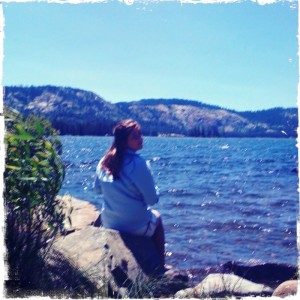
High Mountain lakes
High mountain lakes are stunning things. Typically they are small and deep being carved out centuries ago by glacial movement. They are incredibly clear, cold and beautiful, like a natural diamond. They reflect whatever is around, so if you come upon one surrounded by pines you will see an emerald lake. If the lake you reach is slightly higher and above tree line you will be stunned by the most azure lake you have ever seen and spend your afternoon gazing into it from giant granite rocks like the lizards you will also find there.
Wildflowers
I was surprised stunned and enchanted by the display of wildflowers to be found absolutely everywhere at such a late time in the summer. Everyplace else I have been in California even in the mountains, mostly has their wildflower display played out by this time. But here I was surrounded by the blues of lupins, the yellows of the Indian Paintbrush, the white of Yarrow the brilliant red of the out of this world snowflower.
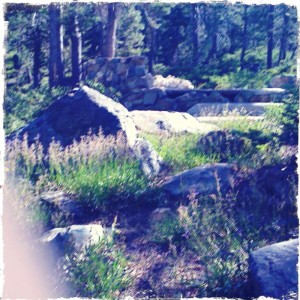
All this really shouldn’t have been a surprise to me. Two of my family members had been up earlier in the year to attend the Audubon’s birding camp at the San Francisco state’s research camp which was about 4 miles up the road from us. Every year this camp hosts break-away classes on field subjects wildflowers, painting, mushrooming and birding which is also excellent in this area. Pixar offers a camp here every year because the artistic opportunities are out of this world in this area. The classes as it turns out are so popular they go online for offering at midnight and are usually filled within an hour. People sit up punching buttons hoping for a chance to get in to the classes.
We didn’t know all that, we had been lucky enough to get in on a scholarship which was won by essay. But on a brief afternoon visit we got the lowdown from the resident camp instructor who was kind enough to allow all of us to tour around and see the sights we had missed earlier in the year. We were also given head’s up that a nest of (grosbeaks) had hatched since the last time we had been there, which was a surprise as everyone had thought the grosbeak they were watching was a male. Just goes to show, the magick of spending a summer watching things unfold in the sierras surprises even the teachers.
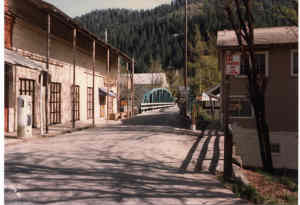
On the way home from camping we decided to take a break in picturesque Downieville. A place that has an old-town main street specifically designed for photo-ops for tourists. The main strip is about 3 blocks long and host a museum a library that is open two times a week and the obligatory theatre that used to be a whore house along with plaques to dearly departed women of the night. We were suckered in by the delicious smells of a taquera. We should have paid more attention to the name of the restraint which was “Cocina Del Oro.” The name didn’t lie as apparently the proprietors felt their food was made of gold. Either that or customers should part with their gold to get it. The food was only passably good and 1 “large” taco was $3.00 it should be noted that large amounted to 2 ½ inches in diameter and the only difference between the large and the small was the shredded cabbage included with the large. I would recommend passing on the siren song of the taco at this place.
As we left I again pondered on why this place is so underused. Unlike other areas of the Sierra Nevadas there are less State parks, more private property and privately run campgrounds recreation areas. There is something about this area that feels like a great secret and perhaps that is how it is meant to be kept. A place where families go generation after generation but don’t tell others. There aren’t enough amenities for this area to end up in Sunset Magazine or any other western travel recommendation. There is barely mention of it in the Camper’s Bible ‘California Camping’ (Moon Outdoors)-Tom Stienstra. It neither praises nor disparages any of the camp areas. All of which are wonderful. No attempt has been made to upgrade campgrounds with anything more than pit toilets, it doesn’t have the popular 1980’s upgrades that other state parks have like coin operated showers or flush toilets, and there are no camper programs or interpretive hikes. All this protects this place in a way. Keeping it feeling like a land just out of reach. However I worry, with California voters having to make decisions on how to pay for our budget and land deals being tossed around in popular areas like Sinkyone wilderness. I worry that the protection provided by lack of knowledge may also be the thing that allows the demise of areas like this. We cannot vote to protect someplace this large that we only know of as “close to Tahoe”.
It is a double edged sword, secret, harder to get to areas. It is perhaps the best news that it is mostly private land. Let’s just hope that those who own it regard their charge as a sacred one.
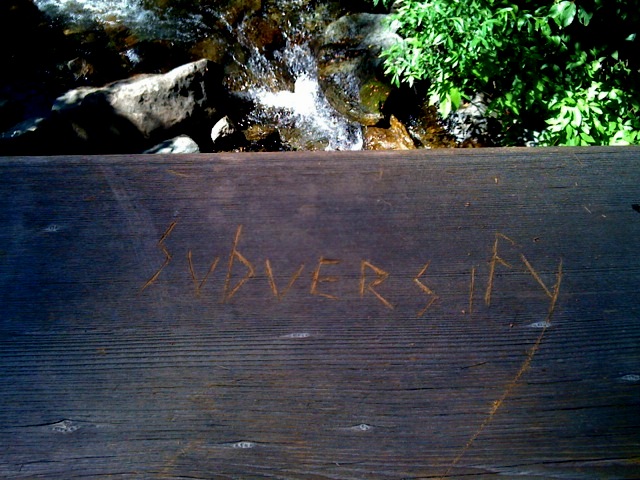
http://www.accessgenealogy.com/native/tribes/pujunan/maiduindianhist.htm
http://www.bassetts-station.com/

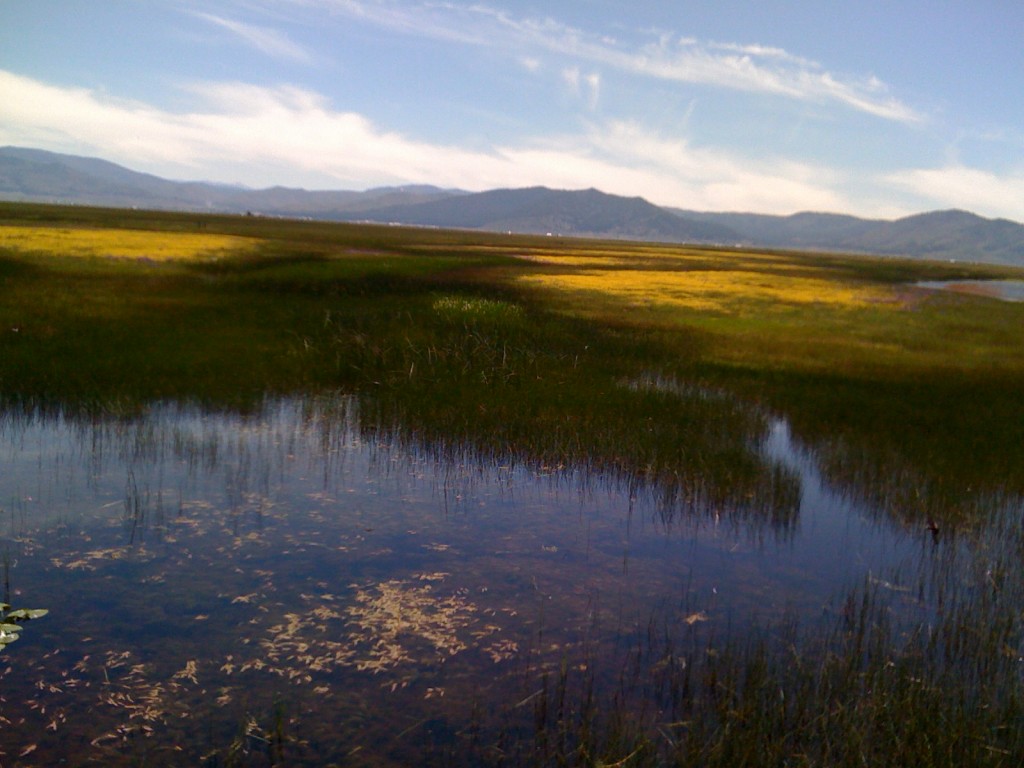
Grainne, that sounds like the type of camping area i like visiting. There’s something about the whole guided tour concept that spoils the aspects of exploration and adventure. It’s good to learn enough about the terrain and the historical artifacts to understand what you’re looking at, but it’s the thrill of individual discovery and the steps into the unknown that give the traveler (versus the tourist) such a thrill. I found the history around Downiville very interesting, and the characterization given the people easy to visualize. Thank you very much for giving us this glimpse into a United States we rarely get to see.
I want to know what the $1200 place had for breakfast, was it an open bar/all you can eat kind of thing ?? and what are the chances that you would vacation in a place where ancient indian tribes had but SUBVERSIFY on all the rocks and caves and redwood signs ??? I don’t camp, I may be camp, but tents and the woods are just not me .. but I loved reading about your vacation …. thanks.
Great write up, wonderful pics, G! Glad you had a fun and relaxing time.
@Rich- I’d say the chances are high anyone could end up in a place with SUBVERSIFY in the area as long as they had a pocketknife and a will to be subversive. As for breakfast I didn’t ask, the price as I said took my breath away. I did drive by these golden cabins which are situated at Gold Lake. They are nothing special. A tent with a mattress. I already had that.
There are a lot of hidden corners in this area that I would like to go back and check out, which is really what this is about. Get to know your world, most of the time you don’t have to go far to find something new in a place that you thought you knew well.
if I can get close enough to the Liberty Bell I will SUBVERSIFY the hell out of it … got to think of a diversion .. and maybe hiding out in the $1200 place for a few weeks …
Rich- make sure to get pictures if you do get close enough.
A+ would read again